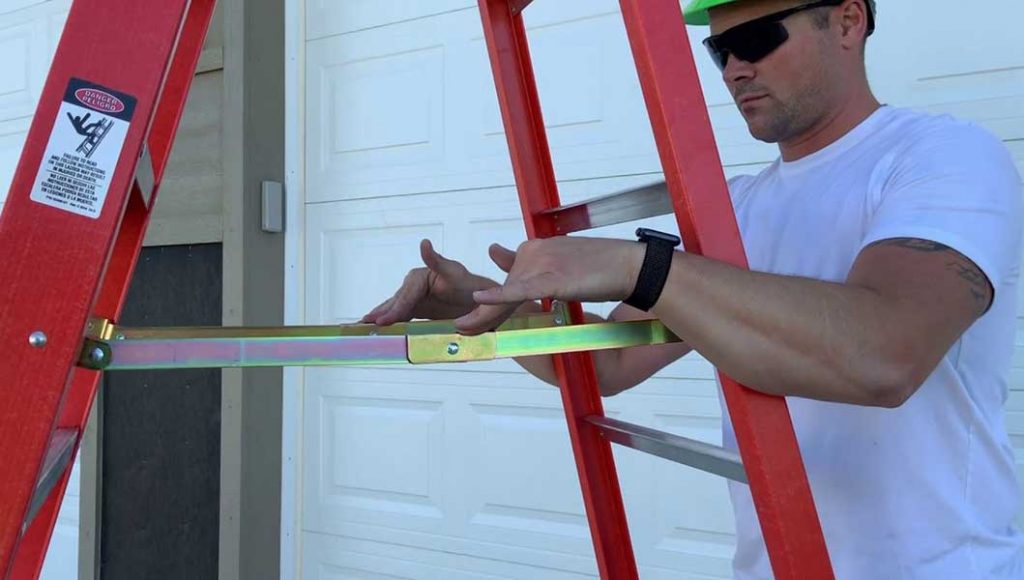Why the Ladder and Stepladder Inspection Course is Essential for Safety and Compliance

When we think about workplace safety, ladders and stepladders might not immediately come to mind as areas of high concern.
However, improper use or maintenance of ladders is one of the leading causes of workplace injuries. This is why the Ladder and Stepladder Inspection Course is not just a helpful resource but essential for any business or individual involved in work at height. This course provides the skills and knowledge to ensure ladders are safe, fully functional, and comply with all relevant UK regulations.
Why This Course is So Important
Falls from ladders are a leading cause of serious workplace accidents, and many of these incidents could have been avoided through proper inspection and maintenance. Whether used in construction, maintenance, or any industry where work at height is required, ladders must be regularly inspected for wear, damage, and other safety risks. Without these inspections, ladders may become dangerous, placing workers at risk of injury and companies at risk of legal repercussions.
The Ladder and Stepladder Inspection Course trains individuals to spot potential hazards, understand the requirements for ladder safety, and perform thorough inspections to ensure equipment remains in optimal condition. More importantly, it provides the knowledge needed to ensure that businesses fully comply with the Provision and Use of Work Equipment Regulations 1998 (PUWER), which mandates regular inspections of work equipment, including ladders. Failing to comply with these regulations can result in fines, legal issues, and, more importantly, accidents that could have been prevented.
What You Will Learn
This course offers a comprehensive approach to ladder and stepladder safety. Learners will gain a solid understanding of:
- Inspection procedures: How to systematically check ladders for damage or wear that could compromise safety, including checking the stiles, rungs, feet, and locking mechanisms.
- Material-specific risks: An in-depth look at how ladders made from different materials—such as aluminium, wood, or fibreglass—each presents specific maintenance and inspection challenges.
- Maintenance and disposal: Understanding how to maintain ladders to extend their life and how to dispose of ladders that can no longer be used safely.
- Record-keeping: The importance of documenting inspections and repairs to ensure full compliance with safety regulations.
This course will equip learners with the practical skills needed to inspect, maintain, and manage ladders safely in any workplace setting.
Benefits to Companies
The importance of ladder and stepladder inspection training cannot be overstated for companies. First and foremost, having employees who are adequately trained in inspecting and maintaining ladders drastically reduces the risk of accidents and injuries. This protects the workforce and reduces potential downtime, compensation claims, and costly legal repercussions.
Furthermore, ensuring that ladders are inspected and compliant with UK regulations helps businesses avoid the financial penalties and reputational damage from non-compliance. When your team is trained in ladder inspections, it demonstrates a commitment to health and safety standards, enhancing a company’s reputation internally and externally. Moreover, maintaining equipment properly can extend its lifespan, saving companies money in the long run by avoiding unnecessary replacements.
Empowering Learners and Improving Prospects
For individuals, the Ladder and Stepladder Inspection Course offers more than just knowledge—it empowers learners to take charge of workplace safety. It equips them with the skills to identify hazards before they become risks, making them invaluable assets. With the rising importance of health and safety across all sectors, having this training can significantly enhance one’s employability.
This course offers real career benefits. Whether you’re looking to progress in your current job, move into a supervisory role, or even shift into a safety-focused career, having the qualifications to inspect and manage work-at-height equipment is highly valued. Employers in construction, facility management, and various other sectors are always looking for individuals with these critical skills. For many, this course is a stepping stone to greater responsibility and better job prospects, providing the knowledge and confidence to take on more advanced health and safety roles.
Compliance with UK Regulations is Non-Negotiable
In any industry where ladders are used, compliance with UK safety regulations is not optional—it’s essential. The Provision and Use of Work Equipment Regulations 1998 (PUWER) requires regular inspection of work equipment to ensure safety, and ladders are no exception. The Work at Height Regulations 2005 also emphasises the importance of using safe equipment for tasks performed at height.
Completing this course ensures that individuals and companies fully comply with these regulations. Non-compliance can lead to accidents, leading to severe financial and legal consequences. A company found to be using ladders that haven’t been adequately inspected could face hefty fines, not to mention the cost to reputation and employee trust. Therefore, this course provides not only peace of mind but a clear pathway to meeting legal obligations.
The Environmental Impact: A Greener Way to Learn
In addition to the critical safety and legal benefits, the Safetyman Academy is committed to reducing the environmental footprint of training. Traditional classroom-based training often required attendees to travel long distances, incurring costs in terms of time and carbon emissions. These courses’ travel, accommodation, and logistics contributed to a significant environmental impact.
By delivering this training online, the Safetyman Academy eliminates the need for travel, drastically reducing the associated carbon footprint. Learners can complete the course from the comfort of their homes or workplaces, reducing emissions while receiving the same high-quality education. This move towards online training aligns with broader efforts to reduce carbon footprints across industries, supporting the fight against climate change and offering a more convenient, flexible way to learn.
Conclusion
The Ladder and Stepladder Inspection Course is more than just a training programme—it is a vital tool to maintain safer workplaces, ensure legal compliance, and promote sustainability. Whether you’re a company looking to enhance safety and reduce costs or an individual seeking to boost your career prospects, this course provides all the essential knowledge you need. With the Safetyman Academy leading the way in safety education and environmental responsibility, there has never been a better time to invest in ladder and stepladder inspection training.
This course helps you protect your workforce and the planet, making it an indispensable choice for companies and individuals.






Responses